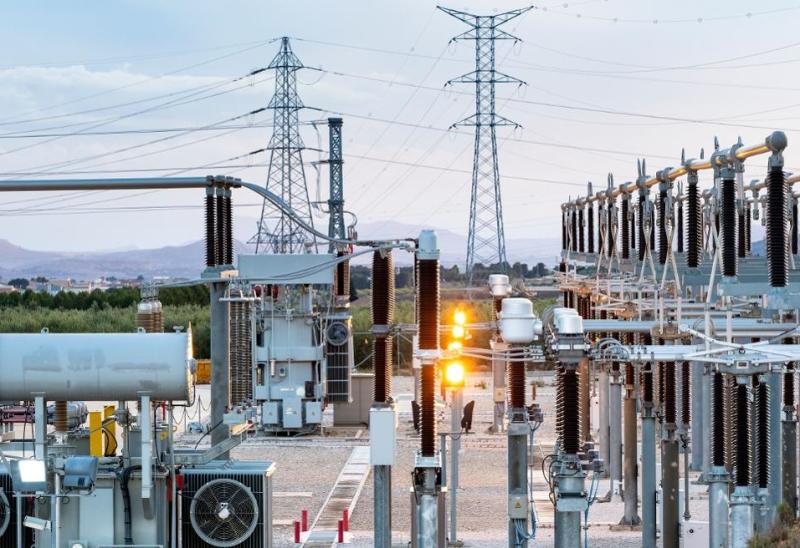All five substations in Liberia have been fully constructed and energized by TRANSCO CLSG, a press release from the Liberia Electricity Corporation (LEC) says.
The latest substation to be added to the energized network is the Botota Substation. The other substations that have been energized include Yekepa, Mount Coffee, Buchanan, and Mano substations.
These facilities will provide Liberia the opportunity to deliver reliable power supply to communities along the CLSG line and the nearby counties.
The Yekepa substation has the capacity to transmit electricity to Nimba, and parts of Bong County, the Buchanan substation will transmit electricity to Grand Bassa, Rivercess, parts of Sinoe, and parts of Margibi counties; and the Mount Coffee substation has the capacity to transmit electricity that can light up the entire Montserrado county.
The Mano substation will transmit electricity to Cape Mount, Gbarpolu, and Bomi counties, while the Botota substation will transmit electricity to central, northern, and eastern parts of Liberia.
The Botota substation also has the potential to connect with the future St. Paul River hydroelectricity expansion project that is being prepared by the government of Liberia with the support of the World Bank.
The CLSG substation at Botota is situated in the Kokoyah Statutory District, in Bong County. Recently, LEC Managing Director and Chief Executive Officer Monie Captan described the addition of the Botota SS to the network as a positive step towards improving the lives of those living in the area.
Meanwhile, the West African Power Pool (WAPP) has achieved a significant milestone in its mission to connect the power transmission networks of ECOWAS member states and establish a unified regional electricity market.
In a recent press statement, WAPP proudly announced the successful permanent synchronization of the power grids of twelve West African countries, marking a decisive step towards regional electricity integration.
The synchronized power grids include those of Benin, Burkina Faso, Côte d’Ivoire, Gambia, Ghana, Guinea, Liberia, Mali, Mauritania, Senegal, Sierra Leone, and Togo. Under the supervision of the WAPP Information and Coordination Center (ICC) and the national control centers of these countries, the power grids will operate as a single synchronous network.
The synchronization was achieved on Saturday, July 8, 2023, at 4:50 a.m. (GMT), signifying a significant advancement in the integration of West Africa’s power systems as part of the ECOWAS Regional Electricity Market implementation.
This accomplishment is the result of years of collaborative efforts among all stakeholders, including lessons learned from unsuccessful synchronization attempts in 2017 and 2020.
The successful synchronization was made possible by a $21.5 million grant from the World Bank, which financed network studies, equipment acquisition, and installation. Additionally, the European Union provided a €30 million grant to WAPP, facilitating the construction and equipping of the ICC, the regional reliability coordinator.
The final phase of unifying West Africa’s power grids involves synchronization with Zone 1, comprising the interconnected grids of Nigeria, Niger, and parts of Togo and Benin. This stage is expected to be completed by the end of 2023, pending the completion of equipment tuning and testing in Nigeria.
To support the completion of synchronization investments and equip the ICC with adequate personnel to serve as the WAPP System and Market Operator, the World Bank has committed an additional $55 million. These resources will play a vital role in furthering regional energy integration and developing a robust transmission network.
The synchronization of all national power grids and the implementation of the Regional Electricity Market will allow the pooling of the sub-region’s energy resources, enhancing the reliability and security of electricity supply at a competitive cost.
Furthermore, it will foster the sharing of frequency reserves and mutual assistance during disruptions, ultimately improving the overall reliability of the WAPP transmission network.
WAPP reaffirms its commitment to regional energy integration and views the successful synchronization as a major milestone on this journey. The achievement reflects the determination and dedication of member states to strengthen cooperation and establish a resilient and sustainable energy future for West Africa.
WAPP expresses sincere gratitude to the World Bank and the European Union, the primary financial backers of this initiative. The organization also extends appreciation to all Technical and Financial Partners who support their activities and contribute to the development of regional infrastructure under the ECOWAS Regional Electricity Market implementation.

